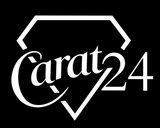When you're sorting through a jar of old coins, it's easy to overlook the humble half dollar. But some Kennedy half dollars are worth much, much more than fifty cents. The real secret to figuring out their value comes down to three things: silver content, condition, and rarity.
The first Kennedy half dollars, minted in 1964, are the big prize for many collectors and investors because they are made of 90% silver. After that, from 1965 to 1970, the composition was changed to 40% silver. From 1971 on, they became the copper-nickel clad coins we see today, with no intrinsic silver value. Because of this, a 1964 Kennedy is always going to be worth a good deal more than its face value.
Decoding Your Kennedy Half Dollar's Worth
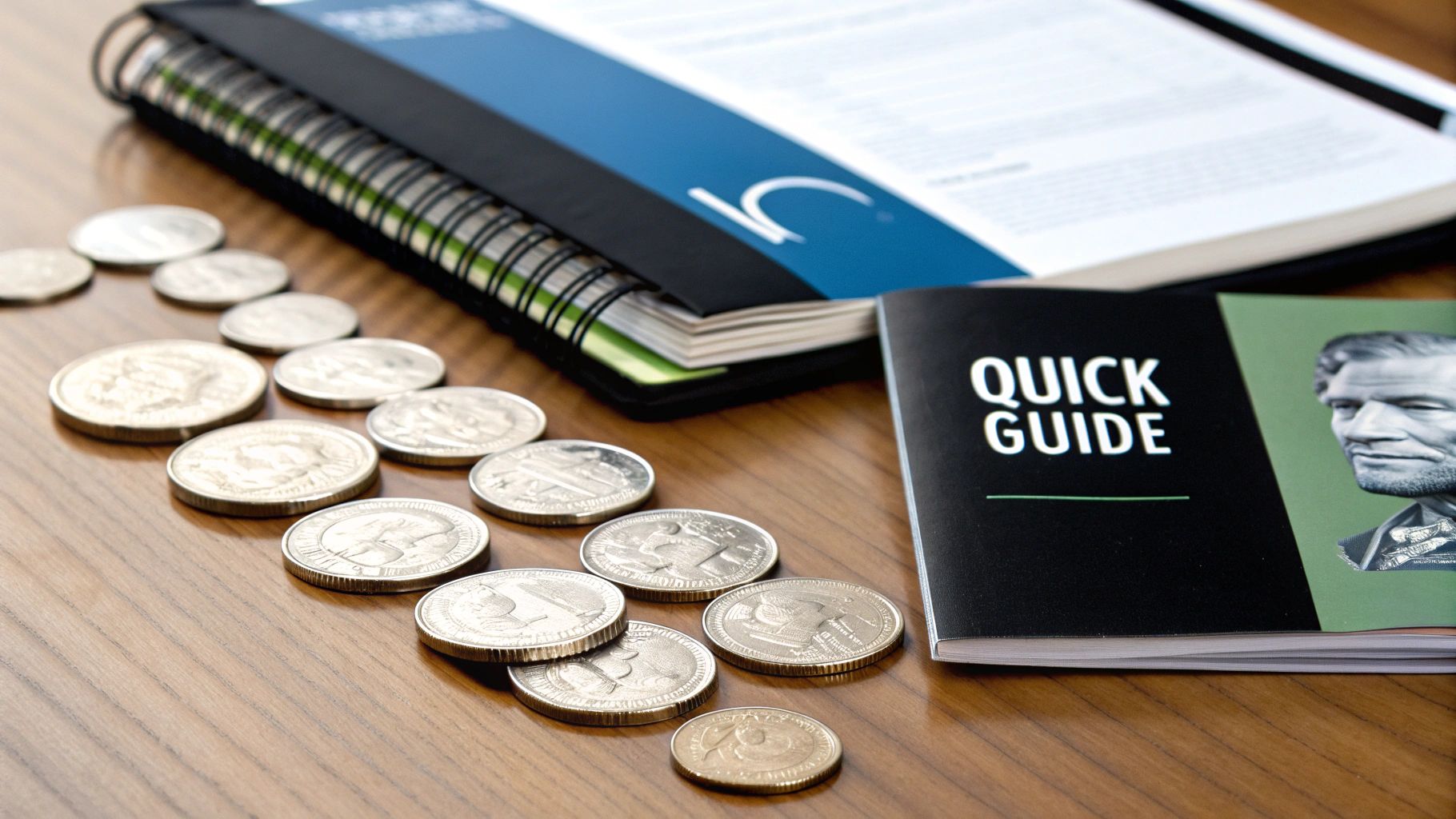
It’s pretty common to find a few Kennedy half dollars tucked away, but most people don't realize their collection might hold some real value. The key to understanding the value of Kennedy half dollars by year is all about the metal they're made of, which changed quite a bit over the years. This guide gives you a straight-up chronological reference to help you spot the valuable ones.
The Kennedy Half Dollar was first struck in 1964, a memorial that was quickly embraced by the public. That initial 90% silver content, however, meant the coins were valuable for their metal alone. People started hoarding them almost immediately, and they vanished from circulation.
Whether you're just getting your feet wet in the hobby or you've been collecting for ages, knowing these fundamentals is everything. If you're new to the game, we've got a great resource to get you started on the right foot. You can learn more by checking out our guide on how to start a coin collecting hobby.
Kennedy Half Dollar Value Summary by Era
To give you a quick starting point, this table breaks down the main eras of the Kennedy half dollar. It's a simple way to categorize what you might have before diving into specific dates and mint marks.
| Era (Years) | Composition | Silver Content | Primary Value Driver |
|---|---|---|---|
| 1964 | Silver Alloy | 90% Silver | Intrinsic metal value & high collectibility |
| 1965–1970 | Silver Clad | 40% Silver | Intrinsic metal value |
| 1971–Present | Copper-Nickel Clad | 0% Silver | Face value, unless it's a rare error or proof |
This table helps sort your coins into the right buckets. The 1964 coins are always valuable, the 1965-1970 coins have a solid silver base, and anything after that is generally worth face value unless you've found something special.
Quick Value Reference by Era
To make your initial search even easier, here’s a simple breakdown of what to look for from the three main eras:
- 1964 (90% Silver): These are the ones everyone wants. Their value is directly tied to the daily price of silver, but pristine, uncirculated examples will always fetch a nice premium from collectors.
- 1965-1970 (40% Silver): While they don't have the punch of the '64s, these coins are still valuable for their silver. They make a great, affordable entry point for anyone looking to invest in physical silver.
- 1971-Present (Copper-Nickel Clad): Most of these are worth exactly fifty cents. The exceptions are key dates, special proof sets, and error coins, which can be quite valuable to the right collector.
Of course, getting an exact value requires a professional eye. If you're in the Boise area and want the highest payout for your silver coins, gold, and jewelry, talking to a local expert is your best bet. We specialize in Gold and Jewelry Buying. You can skip the hassle of shipping things off and sell locally for more than online shipments. We provide hassle-free offers, price matching, and even services like free Xray scanning and Gold Testing to make sure you get a completely fair and accurate appraisal.
How to Grade Your Kennedy Half Dollars at Home
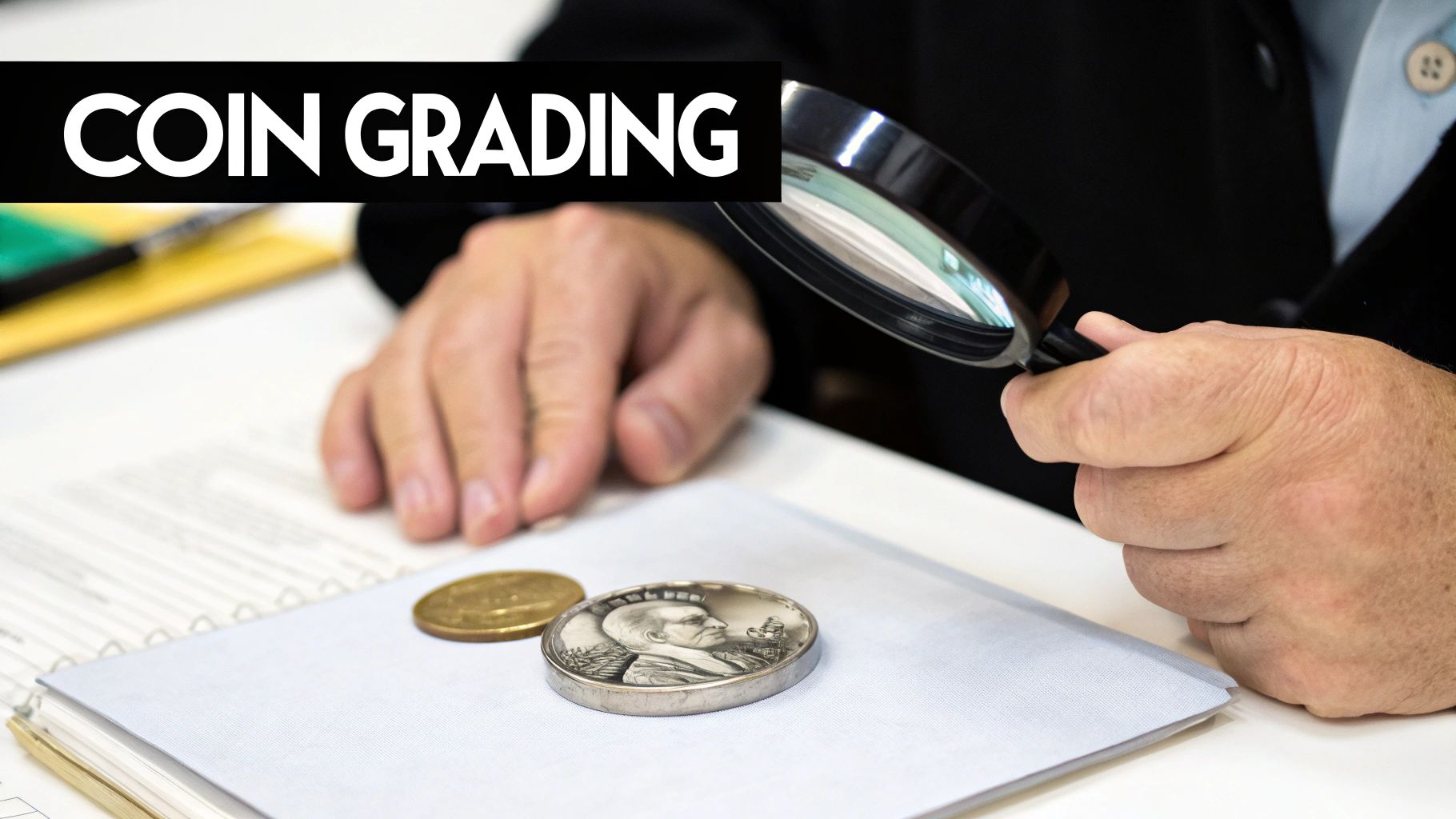
Before you can figure out the value of Kennedy half dollars by year, you first have to get a handle on their condition, or what collectors call the "grade." A coin's grade is probably the single biggest factor that determines its worth. It’s what can separate a common coin from a real collectible.
Grading might seem like a complex science reserved for the pros, but you can absolutely learn to spot the basics right at home. The official scale is incredibly detailed, running from Poor (P-1) all the way up to a flawless Mint State (MS-70). For our purposes, we'll focus on just a few key things to look for.
Key Areas to Inspect for Wear
When you're looking at a Kennedy half, there are a few tell-tale spots that give away its history. Grab a magnifying glass and find a spot with good lighting, then zero in on these high-traffic areas for any signs of flattening, scuffs, or lost detail.
- Obverse (Front): The most critical spot is the hair just above President Kennedy's ear. On a coin that's in great shape, you can see the individual strands of hair clearly. The moment a coin starts to circulate, that area is the first to go flat and smooth.
- Reverse (Back): Flip the coin over and look at the eagle's breast feathers. An uncirculated coin will have sharp, distinct feathers. On coins that have been passed around, the details on the breast and the tips of the wings start to look worn down.
A good rule of thumb: the less wear a coin has, the higher its grade and potential value. It's amazing how even a little bit of friction from rattling around in a pocket or a cash drawer can drop a coin from a brilliant Mint State (MS) grade down to About Uncirculated (AU).
Figuring out these subtle differences is what it's all about. And a quick word of advice—always handle your coins carefully by the edges and resist the urge to clean them with anything harsh. If you're wondering about the right way to handle things, we have a detailed guide on how to clean silver dollar coins safely.
Understanding Common Grades
While the official scale has dozens of grades, you can get a good initial idea by sorting your coins into a few broad categories.
A coin in About Uncirculated (AU) condition is one that saw very little action. It might have the tiniest trace of wear on the absolute highest points, but it will still have most of its original shine, or "mint luster."
On the other hand, a coin graded as Extremely Fine (EF) shows light wear across all the high points, but all the major details are still crisp and clear. Getting comfortable with these distinctions is the first real step in assessing your collection before you decide to get a professional opinion on your gold and silver assets.
Values for the 1964 90 Percent Silver Kennedy Half
The 1964 Kennedy half dollar isn't just another coin; it holds a truly special place in American history and the hearts of collectors. Congress authorized its creation just over a month after President Kennedy's assassination, turning a piece of pocket change into a powerful memento for a nation in mourning.
This is the one and only year the Kennedy half was struck with 90% silver. That high silver content gives it a significant intrinsic metal value, completely separate from its numismatic appeal. The public knew this, and these coins were hoarded almost as soon as they hit circulation, making well-preserved examples a real prize for collectors today. Any discussion about the value of Kennedy half dollars by year really has to start with this foundational coin.
For collectors interested in the broader world of precious metals in coinage, we have a helpful guide on identifying valuable coins from 1964 and earlier.
Philadelphia and Denver Mint Issues
Back in 1964, the U.S. Mint produced Kennedy halves at two different facilities: Philadelphia and Denver. Telling them apart is simple if you know where to look for the mint mark.
- 1964 (Philadelphia): This version has no mint mark. You'll find the empty spot on the reverse side, just below the eagle's left claw.
- 1964-D (Denver): This coin has a clear "D" mint mark in that same location.
Both are incredibly collectible and hold real value. A coin that's seen heavy circulation will generally be worth its silver melt value. Pristine, uncirculated examples, however, can command a serious premium. If you've got some 1964 halves, it's a smart move to have a professional take a look. Here in Boise, we offer a straightforward, no-hassle appraisal, complete with free Xray scanning to confirm their composition and make sure you get the best possible payout. We even price match.
This chart gives you a good idea of how much a 1964 Kennedy's market value can jump based on its condition.
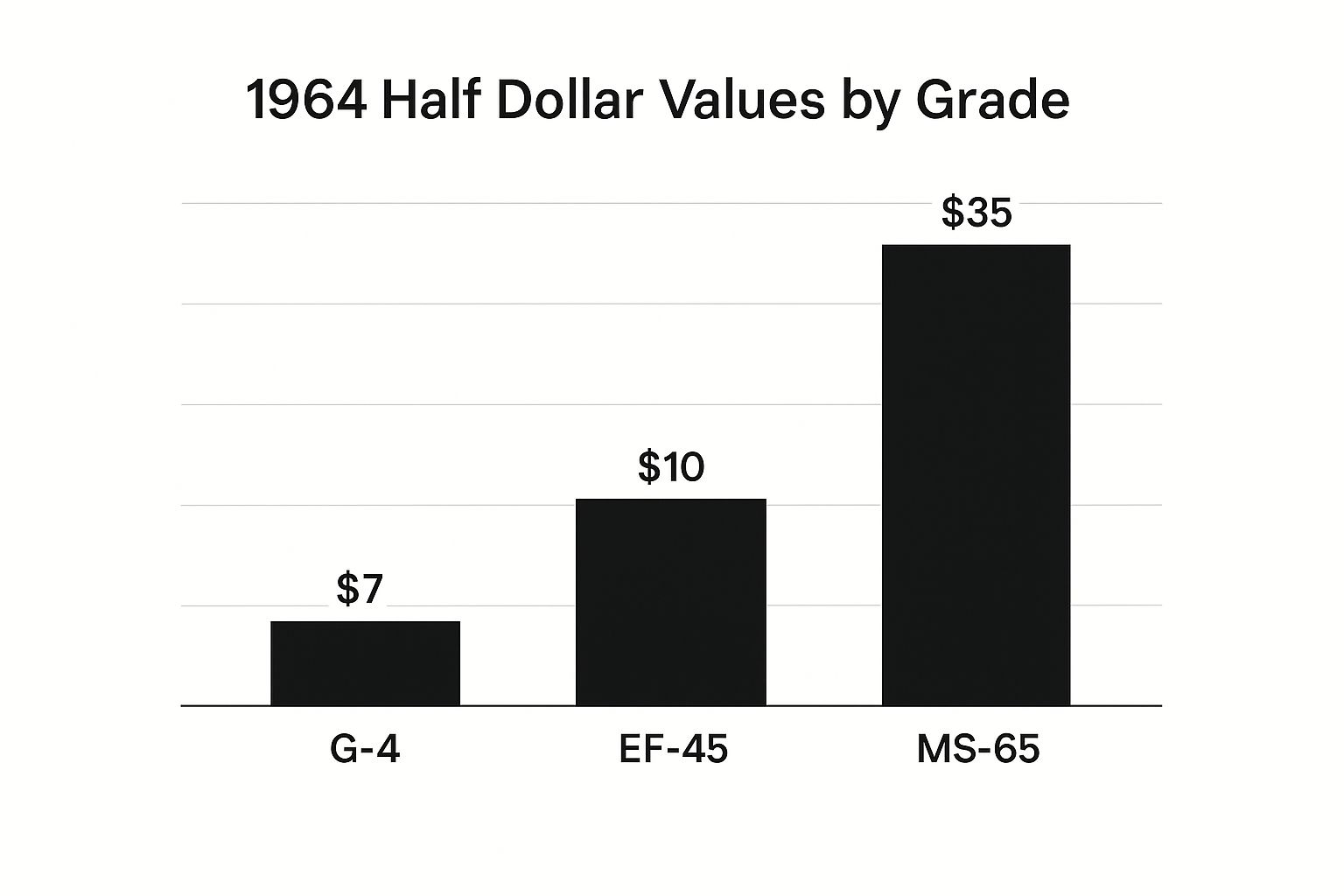
As you can see, the difference is night and day. A mint state coin is worth many times more than one that's been rattling around in a drawer for decades.
The Rare 1964 Accented Hair Proof
Now, for the collectors who love the thrill of the hunt, there's the 1964 "Accented Hair" Proof. This was one of the very first designs struck, and it features much more defined, sharper hair strands right above Kennedy's ear. Jacqueline Kennedy reportedly requested a softer look, so the detail was toned down in later strikes.
This particular variety is a classic rarity in the series. It's estimated that only about 1-3% of the entire proof mintage for 1964 has the accented hair, making it a top-tier target for any serious Kennedy half collector.
If you're looking to sell, doing it locally in Boise means you can skip the headaches, insurance costs, and lower payouts that often come with online marketplaces. We specialize in Gold and Jewelry Buying, and we pride ourselves on offering the highest payout with transparent, free Gold Testing. Save the hassle and sell locally for more than online shipments.
The 1965 to 1970 Era: 40 Percent Silver Half Dollars
After the massive success and hoarding of the 1964 Kennedy half dollar, the rising price of silver on the open market forced the U.S. Mint to make a change. This ushered in a unique, transitional period for the beloved coin series. To really understand the value of Kennedy half dollars by year from 1965 to 1970, you have to focus on their specific, and somewhat unusual, silver content.
From 1965 right through to 1970, the Kennedy Half Dollar was minted with its silver content slashed to just 40%. This obviously meant a drop in their intrinsic metal value compared to the 1964 issue, but these coins are still highly sought after. They represent a distinct moment in U.S. coinage history—the last stop before the switch to the copper-nickel clad coins we know today, which started in 1971.
These "silver-clad" coins are fascinating in their construction. They have a core made of 21% silver and 79% copper, which is then bonded to outer layers of 80% silver and 20% copper. All told, this complex sandwich of metals resulted in an overall composition of 40% silver.
The Silver-Clad Years: 1965 to 1969
For this five-year stretch, the U.S. Mint churned out hundreds of millions of these 40% silver coins. Because they contain a significant amount of precious metal, their base value is directly hitched to the ups and downs of the silver market. For the most part, circulated coins from these years are valued primarily for their silver melt value.
Of course, a coin's condition still matters. Uncirculated examples will always command a small premium from collectors who want a pristine piece for their set. The best way to get a baseline for their worth is to check the day's silver prices. A great place to start is our guide on the spot price for gold and silver, which will help you understand how market fluctuations impact your coins' value.
The Key Date: 1970-D
The one coin from this era that every collector gets excited about is the 1970-D Kennedy half dollar. This is a true key date for one simple reason: it was never intended for general circulation. The only way to get one was by purchasing an official U.S. Mint Set for that year.
With a tiny mintage of just 2.1 million, it stands as the rarest coin from the entire 1965–1970 period. As you'd expect, it carries a significant premium well above its silver content.
When you're sorting through a collection, the 1970-D is the number one coin to hunt for from this era. If you happen to find one still in its original mint packaging, that's a major score for any collector.
If you think you've found a 1970-D or have other silver coins you're curious about, getting a professional opinion is always a smart move. Here in the Boise area, we provide hassle-free offers for Gold and Jewelry Buying, guaranteeing you get the highest payout locally. We also offer free Xray scanning and Gold Testing, so you can sell with total confidence and skip the headache of shipping your valuables.
Identifying Key Dates and Special Issues
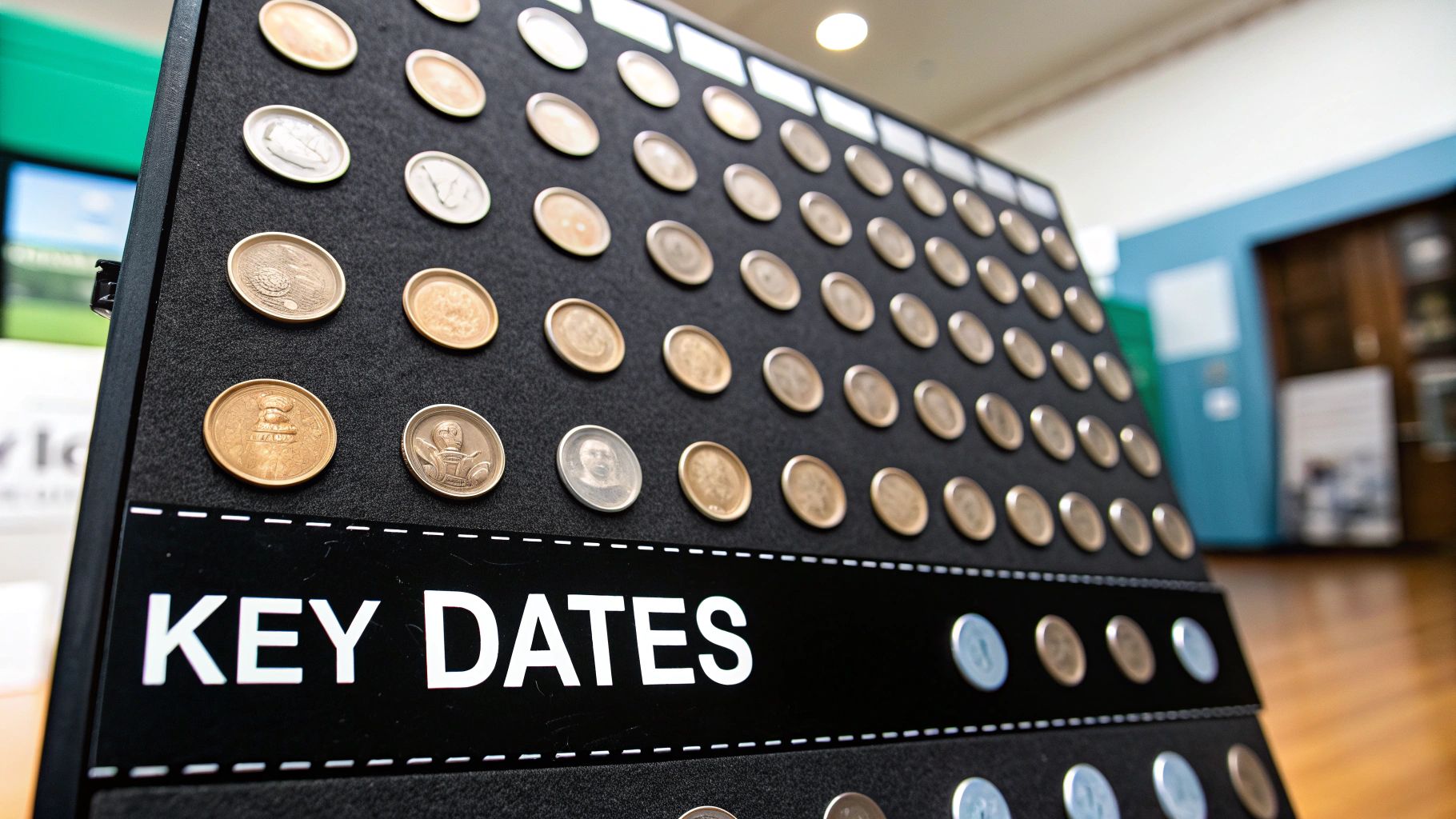
While the silver content is the main story for the early Kennedy half dollars, don't overlook the modern issues. You'd be surprised, but some non-silver coins can be worth far more than their 90% or 40% silver counterparts. Understanding these key dates and special releases is absolutely essential when you're looking at the complete value of Kennedy half dollars by year.
These aren't your typical circulation coins. Most of these valuable modern pieces were specifically made for collectors, which means much, much lower mintages. Spotting these gems requires a sharp eye and knowing exactly what you're looking for.
Not Intended For Circulation (NIFC) Coins
Something interesting happened in 2002: the U.S. Mint just stopped releasing Kennedy half dollars into general circulation. Since then, the only way to get new ones has been to buy them directly from the Mint in rolls or bags. This decision single-handedly created a new collectible category we now call Not Intended For Circulation (NIFC) coins.
The 1987-P and 1987-D half dollars are perfect examples, even though they pre-date the official NIFC era. These were only sold in official Mint and Souvenir sets. With a combined mintage just shy of three million each, that's a drop in the bucket compared to typical production runs.
It's incredibly rare to find a 1987 Kennedy half in your pocket change. Because they were never meant for circulation and so few were made, they've become a prime target for modern collectors and often sell for a nice premium over face value.
Modern Proofs and Special Finishes
This is where you'll find some of the highest values for modern Kennedy halves. The U.S. Mint has produced a whole range of coins with unique finishes, all aimed squarely at the collector market. These aren't just shiny coins; they are specially struck pieces of numismatic art.
Some of these special editions have become quite valuable, especially in top condition. Take the 1998-S Silver Frosted Matte Finish Proof, for instance, or the more recent 2019-S Enhanced Reverse Proof. Depending on the certified grade, these can fetch anywhere from $100 to over $140. For a deeper dive into these modern rarities and their pricing, a leading coin collecting resource is a great place to start.
Of course, we can't forget the 2014 50th Anniversary set. It featured a stunning 99.99% gold proof coin—a first for the Kennedy series and an instant classic for collectors. If you happen upon one of these special issues, or any other gold and jewelry, you don't have to deal with the hassle of shipping. For those in the Boise area, we offer the highest payout, along with free Xray scanning and Gold Testing, and straightforward, price-matched offers.
Get the Highest Payout for Your Coins and Gold Locally
So, you’ve gone through the value of Kennedy half dollars by year and have a better idea of what your collection might be worth. What's next? You could go the online mail-in route, but honestly, those services often feel like a gamble. Between the hidden fees, the risk of your valuables getting lost in the mail, and the lowball offers, it's a path full of uncertainty.
If you really want to get the most for your coins, selling locally is almost always the best bet. For anyone in the Boise area, this means you can save the hassle and sell locally for more than online shipments. We've built our reputation on providing a trustworthy, no-pressure place for you to sell your valuables, with a completely transparent process and a price match guarantee to back it up. We specialize in Gold and Jewelry Buying.
Why Selling Locally is a Smarter Choice
We believe selling your coins should be simple and rewarding, not a stressful ordeal. Our whole process is set up to give you total confidence in the sale.
- Free Xray Scanning and Gold Testing: We don't guess. We use professional-grade XRF technology to assess your items with precision, and we do it right in front of you so you can see exactly what you have.
- Hassle-Free Offers: You’ll get a fair, no-obligation offer on the spot. There’s absolutely no pressure to sell; the decision is always yours.
- Highest Payout Guarantee: We're serious about offering the best prices in Boise. If you bring in a better competitor’s offer, we’ll match it.
Selling with a local expert means you leave with the highest possible payout, without any of the risks that come with sending your valuables off to a faceless company. If you want to get a better feel for the process, we've put together some expert advice on how to sell collectible coins to help you make the most informed decision.
Your Top Questions About Kennedy Half Dollars
After diving into the year-by-year values of Kennedy half dollars, a few questions always seem to pop up. Let's tackle some of the most common ones to help you get a better handle on your collection.
The simplest way to check if your Kennedy Half Dollar is silver is to look at its date and its edge. It’s a two-step process. First, check the year: any coin dated 1964 is 90% silver, and those from 1965 through 1970 are 40% silver.
Next, look at the coin's reeded edge. A silver or silver-clad coin will have a consistent, solid silver stripe. A modern copper-nickel clad coin, on the other hand, will show a very obvious copper-colored band sandwiched between the nickel layers.
Are Bicentennial Kennedy Half Dollars Valuable?
This is a common one! Bicentennial Kennedy Half Dollars, with their unique 1776-1976 dual date, were minted in absolutely massive quantities for circulation. Because they're so common, most are only worth their face value.
However, there's a key exception. The U.S. Mint also produced special 40% silver versions specifically for official Mint and Proof sets for collectors. These silver Bicentennials are definitely worth more, with their value tied directly to their precious metal content.
It's a classic misconception that all Bicentennial coins are rare. They have a fantastic, one-of-a-kind design, but only the uncirculated silver versions carry a real premium for collectors.
Which Mint Marks Are the Rarest?
With the Kennedy series, rarity isn't as simple as one mint mark being consistently scarcer than others. It really comes down to specific year-and-mint combinations that had low production numbers or were made for a special purpose.
The 1970-D is a perfect example and a major key date for the series. It was never intended for circulation and was only issued in official mint sets, making it tough to find. Likewise, special collector-only issues like the 1998-S Matte Finish or the stunning 2014-W Gold Proof are exceptionally rare and highly sought after.
Ready to discover the true value of your collection? At Carat 24 - Trusted Gold Experts, we specialize in Gold and Jewelry Buying, offering the highest payout in Boise. We provide free Xray Scanning and Gold Testing, hassle-free offers, and even price matching. Save the hassle and sell locally for more than online shipments. Visit us to get a professional, no-obligation appraisal today. https://carat24boise.com
